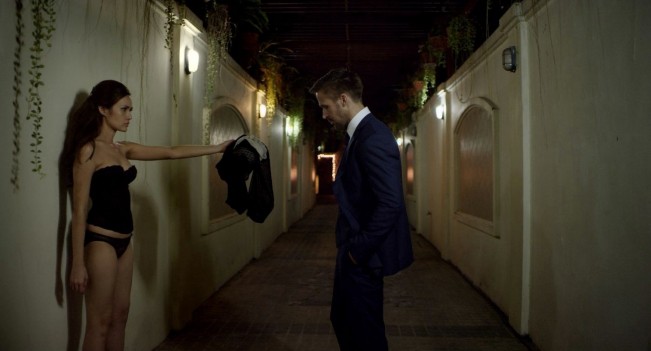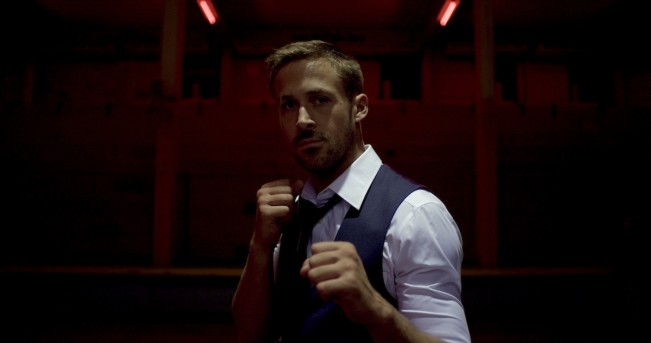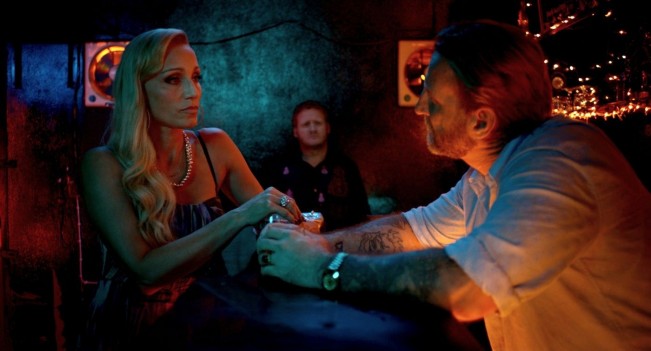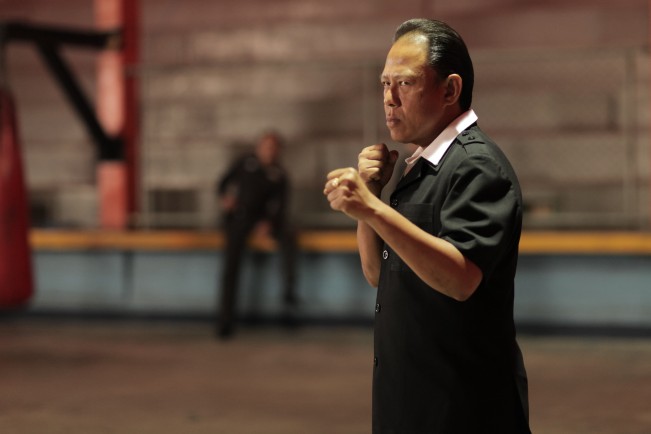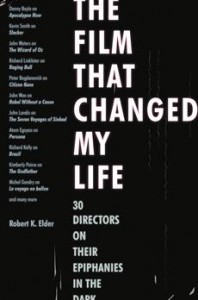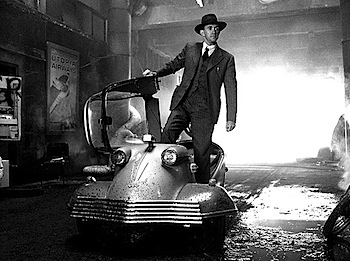By Robert K. Elder
 As an aspiring artist growing up in small-town Texas, Richard Linklater immediately felt a bond with Frank Sinatra as Dave Hirsch, the struggling writer home from war, torn between a world of debauchery and a world of respectability in Vincente Minnelli’s Some Came Running. The film was overshadowed, in part, by the success of Minnelli’s lighthearted musical Gigi, released the same year. The difference in the style and tone of the two films is further evidence of Minnelli’s talent as a director and his diverse gifts. Here, Linklater discusses Minnelli’s penchant for divided characters and why he considers Some Came Running the ultimate Rat Pack film.
As an aspiring artist growing up in small-town Texas, Richard Linklater immediately felt a bond with Frank Sinatra as Dave Hirsch, the struggling writer home from war, torn between a world of debauchery and a world of respectability in Vincente Minnelli’s Some Came Running. The film was overshadowed, in part, by the success of Minnelli’s lighthearted musical Gigi, released the same year. The difference in the style and tone of the two films is further evidence of Minnelli’s talent as a director and his diverse gifts. Here, Linklater discusses Minnelli’s penchant for divided characters and why he considers Some Came Running the ultimate Rat Pack film.
“So much of what I like about this movie, I can’t articulate. It’s just a feeling, like looking at a painting, the way the colors and the camera just all add up,” Linklater says. “It’s just something to be experienced.”
Some Came Running
1958
Directed by Vincente Minnelli
Starring Frank Sinatra, Dean Martin, Shirley MacLaine, Martha Hyer, and Arthur Kennedy
How would you describe Some Came Running to someone who’s never seen it?
Linklater: It’s a story about Dave Hirsch (Frank Sinatra), the prodigal son returning to his hometown, post–World War II. The movie came out in ’58, but it really depicts a period ten years earlier. So the movie itself really is a period piece.
Sinatra plays a drifting soldier and writer who is blocked, who hasn’t written in a while. He’s cynical and drinking more, but he returns to his home in Parkman, Indiana, where all his colliding, contradictory impulses are played out—his mixed feelings about his hometown and these two worlds that he seems to inhabit simultaneously: both the world of respect, culture, and smart English teachers and then another world of booze, broads, and gambling.
These worlds are embodied by different people, most pointedly his drinking buddy, gambler Bama Dillert (Dean Martin), and Ginnie (Shirley MacLaine), the floozy who he’s kind of taken up with. His other world is the hypocritical, social scene of Parkman with his phony older brother—played by Arthur Kennedy in one of the great depictions of a phony—and his frigid wife and all these frigid and false society ladies. The movie just rips the cover off the mannered ’50s era of America—just that whole mind-set of conformity. It’s a wonderful melodrama.
Do you remember where you saw the film?
I saw it on campus in ’84, at the University of Texas. I was just starting to make films for the first time. This film affected me. I remember the next few days thinking about it constantly; it was so much more than I expected. It was a big eye-opener.
It had something to do with Dave Hirsch’s character and something personal with me. I think we’re all torn, in a way, between both worlds. I felt that way personally. I’m from a small town in east Texas. As an aspiring artist at that time, I was moved by his story. He’s a writer and nothing’s come of it yet, so he gives in to his lower impulses with the gambling and the broads. He can hang out with that world, but he really craves some sort of respectability. Ultimately, Dave inhabits both these worlds, but he’s not really at home in either of them.
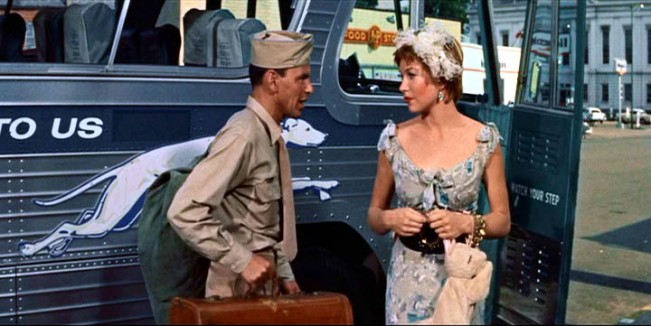
He was a failed novelist. He had one novel that no one had read…
Linklater: The artist out of work is a dangerous thing. He’s attracted to these two different women.
Speaking of which, a 24-year-old Shirley MacLaine plays Ginnie, the “loose” girl who follows Dave around. She was nominated for an Oscar for the role.
Deservedly so. She’d only been in a few films then: The Trouble with Harry and probably most importantly Artists and Models, the Frank Tashlin movie. She’d also been in Around the World in 80 Days, as the Hindu princess.
I always think of Shirley MacLaine as the title character in Sweet Charity. I think of Charity as Ginnie come back to life and moved to the big city. I just feel a connection between those two characters for her. She’s so great in this movie.
And Sinatra, the story was that he had a print of Some Came Running, and it was a film that he would watch over and over. He would invite people over to see it in the screening room, usually under the premise of “Come see how great Shirley is.” And she certainly is. I’ve shown this movie to a lot of people and they just go, “Oh my God.” She was the babe of her day.
I think all three of them are fantastic. It’s my favorite film of all three of those people: Martin, Sinatra, and MacLaine.
Is there a particular scene that closed the deal for you, that made you a fan?
I love all of it; so much of it’s so funny. I love it when Dave first meets Bama; you see him sitting in the background. It’s a tremendous use of CinemaScope, one of the best ever, in the way Minnelli frames the shot. You see his hat before you see him, on the right side of the frame [laughs]. Bama and his damned hat. The way those two come together is sort of a seduction between them.
How do you interpret the title?
I just love it. I find it very moving. I know it’s biblical—I think of it as a life metaphor. There are some people walking through life or strolling through life, but people who are really passionate come running. To me, it’s about passion.
This movie was quite a departure for Minnelli. What about this film lets you know it’s a Minnelli film?
It’s almost impossible to describe; you just have to feel it. I always call it a musical without the numbers—the way it was shot, the colors—and yet it was filmed on location, so it has this realistic quality. Billy Wilder was quoted as saying that Minnelli was “a decorator.” And he certainly was, but I think at the service of something. Visually, he was one of the most interesting directors ever. That last sequence where the guy is chasing Dave with a gun. The music swells and there’s this blast of red—you’re getting lighting and things that you would see in a musical on a soundstage, and boom! It’s real. I just love the way he can amp it up.
There are two great Hollywood stories that came out of the production. The first one is in reference to Shirley MacLaine and Frank Sinatra. They were on set, in his trailer, and the assistant director comes over and says, “Mr. Sinatra, won’t you please come out? We’re two weeks behind schedule. Please come out.” And Sinatra says, “Come in. Is that a script in your hand?”
“Yes that’s a script in my hand.”
“Let me have it.”
So he takes it and flips through it, rips out twenty pages, and says, “OK, we’re not behind now.”
That’s a takeoff on John Ford doing the same thing when some studio person visited him on the set. I’ve almost tried that myself.
According to Shirley MacLaine, he had accidentally ripped out one of her scenes. Sinatra’s character was supposed to die at the end of the film, not Ginnie. So, according to one story, he said, “Why don’t you have her get shot and maybe that will give her more exposure or boost her credibility, maybe she’ll win an Oscar”—and that one gesture made her a star.
How could it be any different? This movie ends at Ginnie’s funeral, at a tombstone. Bama takes off his hat. Something he’d never do for anyone, he does for Ginnie. Maybe there’s hope for Bama after all. But he’s going to die from alcohol and probably of diabetes. He’s on the way out. It’s grim.
Sinatra was famous for doing one take and then leaving. In fact, Billy Wilder said he would never work with him just because of that tendency. But Minnelli went head-to-head with him on the set because of this.
Sinatra felt that his first take was his best take. But yeah, Minnelli had his famous “That was great, darling; let’s do it again” kind of direction. And he drove people crazy, because it was often not only the performance but it was “The Ferris wheel in the background has to be in that part of the frame.” It was all about the shots.
Well, that’s the other famous story: Minnelli is setting up the carnival scene, and he’s looking through the lens, and then looks up from the camera and says, “OK, move the Ferris wheel.”
That’s a great story and no doubt true.
Minnelli said it was. Sinatra was so pissed that he got in his limo and went back to L.A. But Minnelli’s point about this was “Well, if we didn’t move the Ferris wheel six feet then it wouldn’t be the focal point. You couldn’t see it in the background.”
And you know what? He’s right. It is beautiful. I heard years later Minnelli asked Sinatra for a song for a movie, and he gave it to him because they were real buds. They did bend the shooting schedule to suit Frank. From noon to 8 p.m. How are those for hours? Sinatra is just so great in this movie. I think it’s the pinnacle of his acting career. To me, it’s the peak of his vibrant middle period, if he has a three-act acting career… He had a great run in the ’50s, From Here to Eternity on, but this is the best Rat Pack movie of all time. I think this depiction of him is a guy just like himself, like Sinatra. He was never a soldier; he played them. But here, he is an artist.
Shirley MacLaine said of Sinatra, “Oh my goodness, think of what that man could do if he really worked.” She thought he was afraid to see what might happen if he worked up to his full potential. It might destroy everything he’s done by playing it casual, which was his screen persona. Right about this time in his career, he was an artist in crisis.
Or he had been. Certainly, I don’t know where he was at this moment… it might have been a crisis over Elvis, maybe thinking his singing career was at an end.
In All the Way, his biographer quotes Sinatra saying, “I wasted ten years trying to do everything at once and getting nothing really done well.” But from your perspective as a fan of this film, what does he do well?
I think he plays himself incredibly well. Just as the way he would put himself into a song and just interpret it, I think he’s so aligned with Dave Hirsch. I think probably this is so close to him and who he was at that moment. And it was a lot of the way he saw himself too.
I’m not surprised that he would watch this film later in life and look back. It’s him: that’s the guy on the album cover, that’s the guy on the lamppost alone, the cigarette burning. He’s forlorn, and other happy people are walking by—but he’s conflicted. Maybe if he had a shot of whiskey? There might be some floozy nearby. But fundamentally, he’s alone. Maybe, in his heart of hearts, he was that kind of lonely, conflicted guy. I always imagined Sinatra as hugely torn and ambitious.
I think the contrast is between Martin and Sinatra . . . that’s where you really not only depict these two characters Bama and Dave, but you see also Martin and Sinatra. While they’re friends, I just think that for Sinatra, things meant more. He held grudges. He was aggressive. He was ambitious.
Look at how their lives turned out. When Sinatra died, I felt he had worked hard for his legacy—he sang until the day he dropped, practically. He was on tour as an old man. He was going for something. There was some internal demon in him that needed something in his performance, in whatever it was: adulation, his place in history. He wanted to be more than he was, he wanted to be a tough guy, he wanted to be a gangster. The best quote I’ve ever heard about these two guys was: “Sinatra wanted to be a gangster and all the gangsters wanted to be Dean Martin.” That tells you everything.
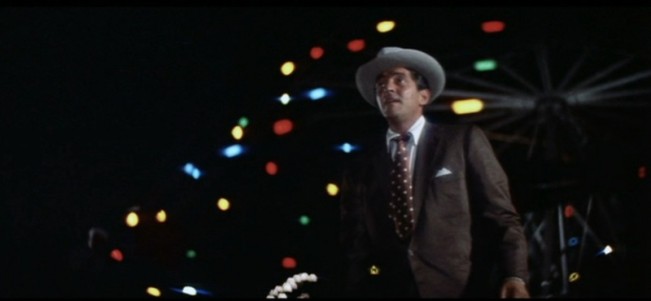 What distinguished them?
What distinguished them?
Let’s look at Martin: a truly gifted singer—maybe not quite Frank, but he’s truly gifted. He was a natural actor, a charming, wonderful person but just wildly underachieving, ultimately.
Just go into a record store and look under Martin—and then look under Sinatra. With Sinatra, you get eight thousand albums of every kind, and Dean Martin, today, you would find his greatest hits. That’s all you would find. When they died, Dean Martin got a cursory treatment, but it was nowhere near the outpouring for Frank Sinatra. It was almost like Sinatra had earned that; it meant something to him. Dean Martin, on the other hand, didn’t give a shit, you know? His attitude would be, “Why? I’m not going to be around to enjoy it.” He never pushed himself—but that was his charm.
I heard that on his TV show Martin got paid like $15 million a year to do this show, and he put it in his contract that he wouldn’t rehearse. He didn’t need to. He was so smooth, you know? Everything came really easy to him. He was the master of getting the most out of the least amount of effort.
He exuded that character, and that’s who Bama is. He says it very clearly in the movie, why he is a gambler: his father “used to gamble when he was plowing up his fields, hoping for a crop… So I figure if a man’s gonna gamble, he might as well do it without plowing.” It’s very funny. He states it very clearly, but he’s the kind of guy who’s going to confidently wing it through life—just be himself and that’s going to be plenty, you know? That’s going to get all the girls, and it comes easy to him. He’s not conflicted; he’s happy with who he is.
With Sinatra, you get the feeling he wasn’t totally comfortable with his place. He never totally settled in. That’s why he’s so interesting to look at. His interior is so conflicted. So I know Sinatra didn’t do a lot of takes, but that’s probably because he knew in the first one he could be himself, and it probably was his best.
Let’s get back to Minnelli moving the Ferris wheel. What do you think that illustrates about him as a director?
He was the top stylist of his day. He couldn’t just say, “I’ve had it in my mind for six months that this shot would be in there” and then go, “OK, well, I don’t want to upset anybody; it’s not that big of a deal.” He had that in his mind: “That’s the way it should be. That’s the way it’s gonna be.” If I were working with Vincente Minnelli, everyone would bend over backwards to do anything he fucking said, because he deserved it.
I’ve been thinking a lot about him lately. I just don’t think he’s ever gotten the credit he deserves. I think maybe because he was a studio guy completely, whereas Wilder and the other guys were seemingly more independent. But I think Minnelli had the greatest career. I would trade anything to have that. It’s a fantasy of mine to be a studio director at MGM for three decades. It just sounds like heaven to have a career like Minnelli.
I’m probably the only guy who flew across the country to see Liza Minnelli perform the songs of her dad on Broadway. There was this great show “Minnelli on Minnelli.” It was wonderful, because she never sang her mother’s songs, but she did in this revue. She sang songs from her dad’s movies and she did a slideshow and just talked about growing up.
She said, “Most kids go to camp, I went to MGM for the summer.” She just talked about her dad, and it was this loving tribute to her father. I just think he had one of the great twenty-year runs. I would say between ’45 and ’63, arguably, he made more good movies than anybody else in that period. By definition, musicals and some of these melodramas aren’t taken as seriously. He just pulls you in; he has a real feel for his characters.
What made you so drawn to him, and why do you think he’s so overlooked?
Well, I think that he could take on such a vast array of material. Like all the great studio directors, he had a huge range. All the guys back then—that was just the way you made movies. With Minnelli, you have the musicals, you have the melodramas, you have comedies, The Long Long Trailer; you have Cabin in the Sky. You have so much. Yet he found his way into all of these and personalized them.
I would rate him in the same breath as Hawks and Wilder. I think it was his personality. He wasn’t very articulate. He personally didn’t make a legend of himself. He didn’t have a lot of crazy stories to tell. He wasn’t that big a character. You feel like he was kind of a quiet guy, the sensitive artist-type dude. He wasn’t a notorious person, just kind of an artistic perfectionist.
I see him as the quiet craftsman. He saw the studio as an apparatus to work for him. When the studio system was falling apart in the ’60s, he was old, but that was pretty much the end of his career, too. So his fate was MGM’s fate, more or less. I don’t think you could find a director whose career so paralleled the studio system, the ups and downs.
Speaking of downs, the review from Newsweek read, “Despite its lack of thematic purpose (or possibly because of it) [it] shows flashes of brilliance.” Time wrote, “The spectacle of Director Vincente Minnelli’s talents dissolving in the general mess of the story [is] like sunlight in a slag heap.”
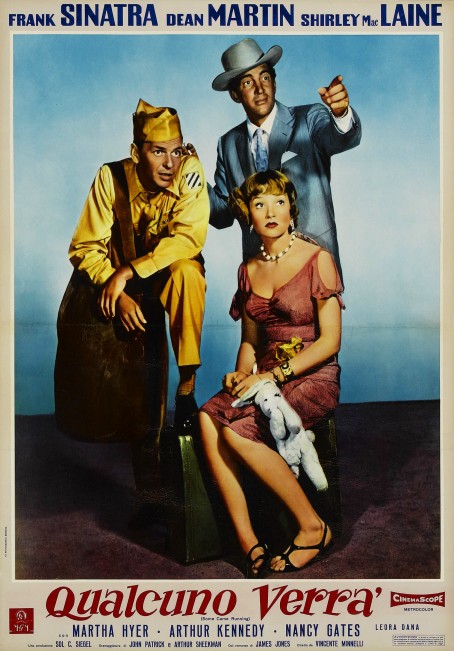 It’s almost the same thing they would say about Douglas Sirk or anything that’s melodramatic. It’s why It’s a Wonderful Life didn’t work in its day. It’s just too much; it’s just too raw. Time has a great way of shaking out a film’s core, what it’s really about.
It’s almost the same thing they would say about Douglas Sirk or anything that’s melodramatic. It’s why It’s a Wonderful Life didn’t work in its day. It’s just too much; it’s just too raw. Time has a great way of shaking out a film’s core, what it’s really about.
When you first watch a movie, you pay your money. Maybe you’re on a date. I mean, movies have two lives, obviously. Their short-lived economic life is just how you hook up with an audience at that moment. If you’re breathing the same air and it fits into the culture, then you’re lucky that the planets have aligned and people respond to your movie at that moment.
Once it’s an artifact from the past and you go see it in a repertory theatre or watch a DVD, then it’s something else. You see it on its own merits for what it is. You can see more clearly the artist’s intentions and the depth in there.
It’s always fascinating to see the reviews. Pull out the Raging Bull reviews from when that came out and they’re all over the place. There’s something unlikable about that film. I’d say, in a similar way, there’s something just fundamentally unlikable about Sinatra and Dean Martin in this. Do you really want to pay money to see an artist dig through his own shit? Is that worth your money? And at that time and date, it probably is a little much, even though it is Frank Sinatra. It’s misogynistic.
And that comes to the core question of why this movie was overlooked. Certainly Shirley MacLaine and Martha Hyer were nominated for Oscars for it. But it was also up against Minnelli’s own Gigi, which swept the Academy Awards. Minnelli was against himself.
See, that’s what’s exciting, too, in Minnelli’s career, to have in the same year made this dark melodrama and then make Gigi, one that we all can rally around and say, “We love that.”
Some Came Running, on the other hand, audiences seemed to say: “This depicts a world I don’t love. In fact, I wish it didn’t exist. So thanks for rubbing my face in it and reminding me that we’re all kind of phonies. We all want what we can’t have; we all are conflicted.”
Did you ever have any association with people who worked on the film?
A buddy of mine, Nicky Katt, an actor I’ve worked with several times, he was in a movie called The Limey. He got up at an awards show to accept an award on behalf of Terence Stamp, and Shirley MacLaine was in the audience.
Nicky got up and said, “Not to be too Ving Rhames about it, but I’d like to dedicate this to Shirley MacLaine for Some Came Running,” and she came up onstage. In her mind, it was a forgotten film, too. No one hits her up on the street and goes, “You know, you were really great in Some Came Running.”
Everyone knows Shirley MacLaine from The Apartment, and that’s a great movie, but Some Came Running, to me, is as good. It’s funny the way the canon exists. I think some of the depictions in it make people a little squeamish.
I forgot to ask, but what were you haunted by that week after you saw it?
Just a feeling, just an emotion like when someone depicts something dark and personal. I woke up thinking about it the next few days after I first saw it. I’ve shown it a lot in the film society that I run. If I can get the good 35mm CinemaScope print, I’ll show it to some people who haven’t seen it. It’s a real eye-opener for people. It’s not what you expect; it’s deeper and richer and more nuanced.
It’s far darker than I expected it to be.
That’s what I think is so ballsy about it. It’s getting below the veneer of ’50s America. It’s creepy and just amazingly current. It’s amazingly not dated in a certain way. Things change, but the way guys refer to women behind their backs is not that different. That milieu of gambling, drinking never changes. To me, its cup runneth over. So much of what I like about this movie, I can’t articulate. It’s just a feeling, like looking at a painting, the way the colors and the camera just all add up. It’s just something to be experienced.
Depending on whose biography you read, Minnelli brought them together—according to his version—but I think it’s more likely that Sinatra got his friends a job, making this the first Rat Pack movie.
This was the first Rat Pack movie, and to me it is the best Rat Pack movie. It’s the ultimate Rat Pack movie, although it lacks Sammy Davis Jr., Peter Lawford, and Joey Bishop. Those guys were always kind of minor players anyway. To me, it was always about Frank and Dean, and Shirley MacLaine as the mascot. But this is unique because these guys are—in a big way—sort of playing themselves.
There are definite parallels between Dave Hirsch and Sinatra. Pre–From Here to Eternity, Sinatra was sort of washed-up, not in favor, probably close to being an alcoholic bum, kind of a has-been, and that’s where Dave finds himself right at that moment.
This was filmed just after Elvis hit it big in 1956, so Sinatra had been outshined or replaced by the advent of rock ’n’ roll.
Yeah.
It’s interesting that you bring up this thing about Shirley MacLaine as the mascot. It’s been written over and over that she was the mascot of the Rat Pack. In this film, that’s exactly her role. I’m wondering if that was informed by their actual relationships, if you get a sense of that on-screen?
They couldn’t have nailed it so well if there wasn’t something personal there. I think they were all buddies.
The thing for me that was off-putting was Bama constantly calling Ginnie and the other girl “pigs”!
Even she knows she’s a pig. There are charges of misogyny. But how can you look at this and not think it’s Dave and Bama who are the pigs, clearly? But it is a sad portrayal of a woman’s masochism, certainly. Bama is ultimately a piece of shit, but a charming one. But see, Bama never would have responded to Ginnie and her pure love the way Dave does. Dave is an artist. Bama would be incapable of what Dave is capable of.
When you first saw the film, what was it about for you?
It’s a great depiction of a guy dealing with conflicting impulses, a typical Minnelli character, an artist who’s divided against himself. You saw the same guy over and over, whether he’s Gene Kelly as An American in Paris or Fred Astaire in The Band Wagon, Kirk Douglas in The Bad and the Beautiful—an artist who’s trying to come to grips. He’s trying to reach out to other people. You see these people yearning for some kind of human connection, but there’s something within themselves that makes it difficult. It is a depiction of how people come together or don’t come together. How your needs really can’t be fulfilled by one person.
And in Some Came Running, Sinatra is torn between two women—Gwen, the respectable schoolteacher, and Ginnie, the floozy.
Linklater: When these women do meet, there’s that one just unnerving scene where Ginnie visits Gwen (Martha Hyer) at the school and they talk. In a movie with opposites colliding, they are so opposite that they shouldn’t even be in the same scene. It’s just unnerving, like they shouldn’t be in the same frame together. Opposites colliding everywhere—stylistically and thematically.
According to James Jones, this is what his novel “Some Came Running” is about: “the separation between human beings—the fact that no two people ever totally get together; that everyone wants to be loved more than they want to love.” There was some tension about the movie adaptation, so Minnelli’s response to that quote was “Why you would take 1,266 pages to say that is debatable.” But do you see that theme come to life in the film?
Linklater: I think the adaptation of Some Came Running is one of the greatest adaptations ever. I’ll admit, I haven’t made it all the way through the book. I read about three-quarters of it, got interrupted, and never picked it back up. It’s dense, it’s lengthy, and actually, to Minnelli’s credit, the movie’s depiction of Ginnie is much more sympathetic than in the book. I just think Minnelli loved women and had a feel for her. She’s a great depiction of someone giving unconditionally, and when Dave responds to that, when he asks her to marry him, to me, that’s such a moving moment.
Excerpted with permission from The Best Film You’ve Never Seen, published by Chicago Review Press, June 2013, available via IPG, Amazon, and wherever books are sold.
http://bestfilmneverseen.com/. Follow Robert K. Elder on Twitter: @robertkelder






